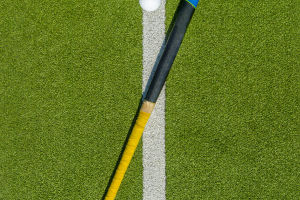The Winning Hand
Volleyball is a popular sport that captivates countless fans with its unique rules and fast-paced competition.
In volleyball, each team requires players in various positions to leverage their strengths during the game.
This article aims to introduce the five major positions in volleyball and their characteristics to enhance readers' understanding of this dynamic sport.
1. Outside Hitter
The main attacker, typically the team's primary scorer, is responsible for securing points on the offensive front. An outside hitter must possess exceptional jumping ability and strength to execute powerful smashes mid-air.
Furthermore, they must exhibit proficient passing and receiving skills to sustain a continuous offensive onslaught throughout the game. The performance of an outside hitter on the offensive end often dictates the team's offensive efficiency, thus underscoring their pivotal role within the team.
2. Opposite Hitter
The opposite hitter, often complementing the main attacker, plays a significant role on the offensive front. Positioned opposite the main attacker, the opposite hitter must excel in spiking and attacking skills to create scoring opportunities during gameplay.
Unlike the main attacker, the opposite hitter typically doesn't prioritize receiving serves but focuses on capitalizing on offensive opportunities to accumulate points.
3. Setter
The setter is the team's organizer and engine, wielding considerable influence over gameplay. This pivotal position demands excellent passing and meticulous organizational skills to facilitate scoring opportunities for teammates on the offensive front.
Often functioning as the team's secondary passer, the setter must make astute passing decisions based on the situation and the positioning of their teammates to distribute the ball to the most reasonable attacker effectively.
4. Middle Blocker
The middle blocker assumes the role of the team's blocking specialist, tasked with thwarting the opponent's offensive maneuvers on the defensive end. To excel in this capacity, the middle blocker must have outstanding jumping ability and quick reflexes to intercept the opponent's mid-air spike.
Moreover, on the offensive front, middle blockers can also make significant contributions by participating in fast breaks and executing mid-range attacks to secure points for the team.
5. Libero
Liberos serve as the team's defensive stalwarts, shouldering the bulk of defensive responsibilities on the field. Typically refraining from participating in offensive plays, liberos focus primarily on receiving the ball and fortifying the team's defense.
Distinguished by their distinctive jersey color, separate from their teammates, liberos are easily identifiable to referees and spectators alike. Liberos must exhibit exemplary defensive skills and lightning-quick reflexes to neutralize opponents' attacks effectively.
In summary, each of the five major positions in volleyball possesses distinctive characteristics, with each position playing an indispensable role in the game. Players in each position necessitate specific skills and abilities to excel in their respective roles during gameplay.
Through the elucidation provided in this article, it is hoped that readers can gain a deeper understanding of volleyball as a sport, along with its unique attributes associated with its various positions.


